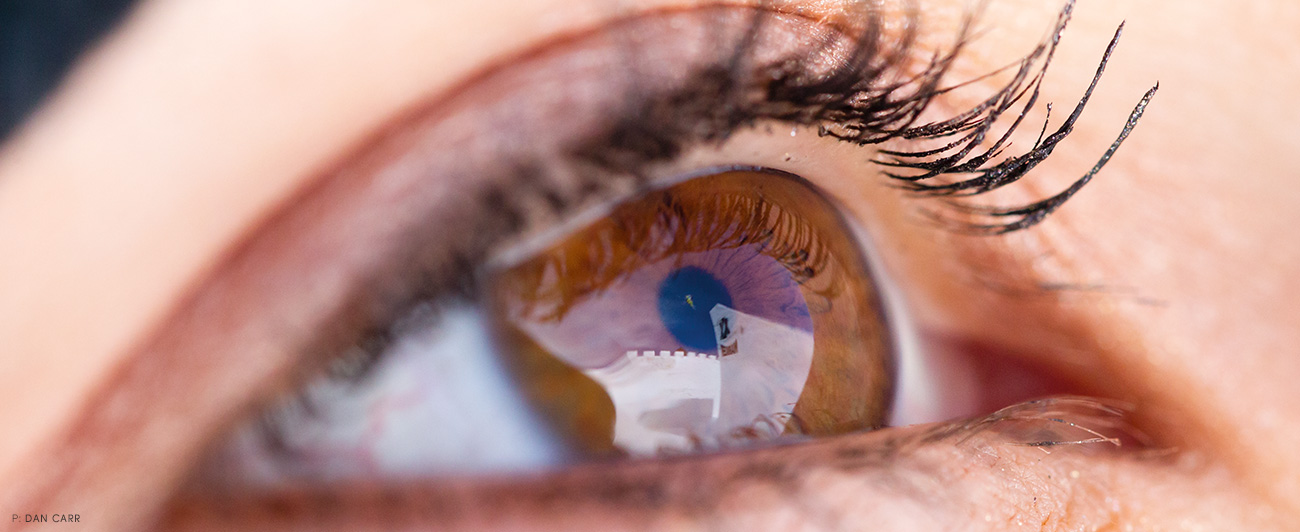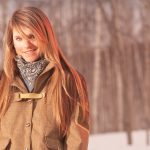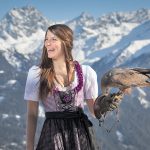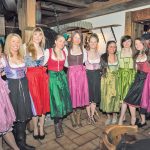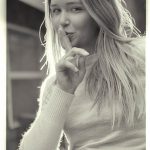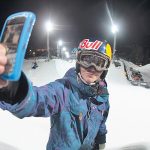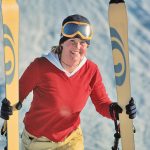Culture
Stay Golden
Pioneering Female Freeskiing
“I remember being really excited, but also kind of nervous—my first big photo shoot,” Parker says. “They had hired a model to help us figure out how to pose and all that kind of stuff. At 17, I was pretty uninterested. I was still very much a tomboy and I was like, ‘Yeah, you guys can take these modeling classes. I’m going to go skateboard.’ I remember coming back from skateboarding and stuffing my face with potato chips, and the model was like, ‘You should probably put the chips down. Your shot’s up next. You’re in the bathing suit.’”
Even as Parker started compiling contest podiums and wins, that photo shoot, in which she appears in a bikini standing in a hot tub, was a subject that haunted her for years to follow. The sport, though growing, still had uphill battles to fight that had nothing to do with how women represented themselves on the hill. Women freeskiers began to be included in events, but it was often without TV time, on courses not designed for them, and without a weather day. That often meant competing in poor conditions and for a fraction of the prize money offered to men.
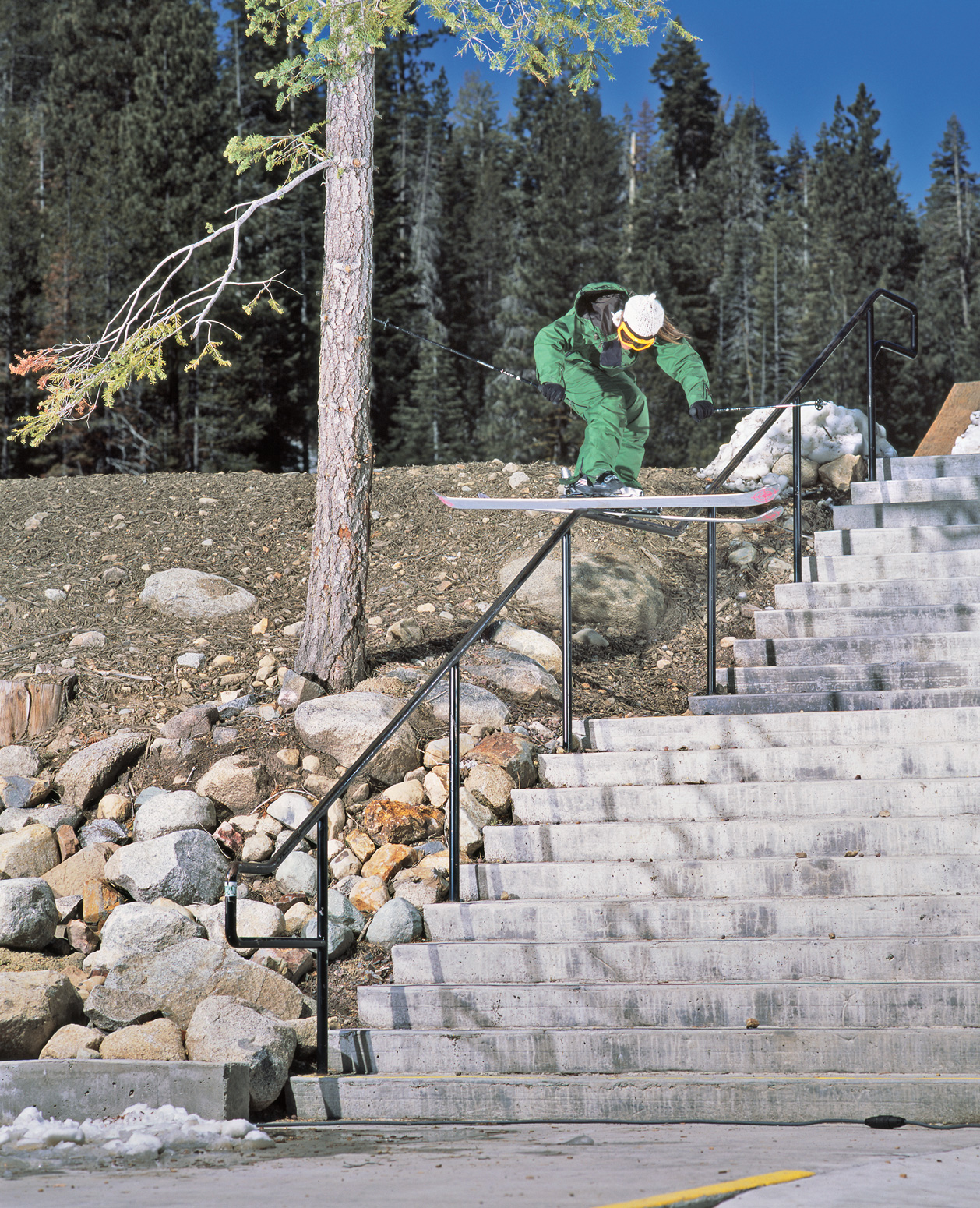
“Michelle Parker lacing a handrail for Freeskier’s 2005 ‘Women of Freesking’ issue. It was so gnarly. If I had been the sole voice in picking a cover that year, Michelle’s shot would have been it for sure.” Photo: James Michelfelder
“One year at X Games, the men were making $10,000 or $20,000,” says Kristi Leskinen, one of the most decorated skiers of the era. “The girl’s prize money was $2,000.”
Sarah Burke—a Canadian who took freeskiing by storm in the early 2000s—and Leskinen were the sport’s most vocal leaders, advocating for inclusion and the same protocols and rewards the men enjoyed. They backed up their lobbying with their skiing. Poor Boyz Productions featured Burke and Leskinen in their movies for five years before the X Games hosted a single women’s freestyle contest.
“Early on, beyond doing the harder tricks, it was about being able to do them with a bit of style,” Leskinen says. “Johnny Moseley’s Olympic mute grab [in 1998] kind of helped launch everything. Being able to do a 360 with a mute grab was a big deal. When I did my first rodeo 540 and rodeo 720, that was definitely a bit of a turning point. That was something that proved that we were capable.” About that same time Candide Thovex and Tanner Hall were winning X Games medals with switch rodeo 720s and D-spin 900s.
“[Kristi and Sarah] were incredibly motivating,” Parker says. “Sarah was ahead of her time and fought for equal [prize money] over 10 years ago. She was successful in that. I’m seeing the World Surf League just now giving equal pay to women.”
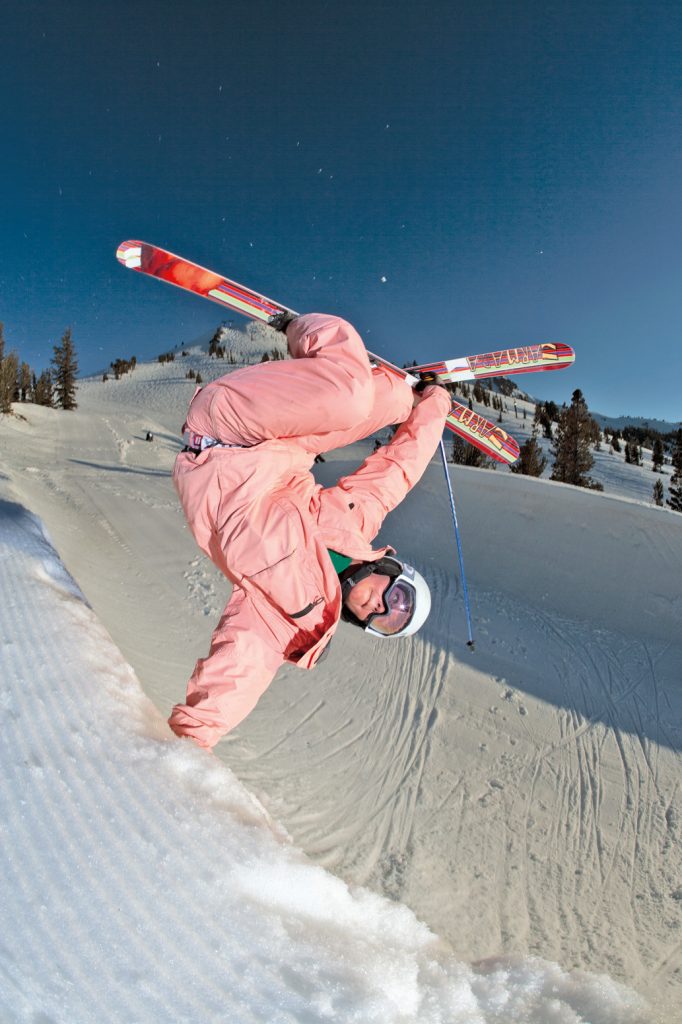
“Grete Eliassen had skis with shirtless guys on them—hunks on skis. Guys had girls on skis and she wanted to reciprocate. The skis didn’t sell that well—only a couple hundred pair worldwide—but I thought they were dope.” 2006, Mammoth Mountain, CA. Photo: Chris O’Connell
Burke and Leskinen paved the way, but many talented women followed suit—the rail prowess of Kaya Turski, the competitiveness of Grete Eliassen. Marie Martinod, Virginie Faivre, Kim Lamarre, Ashley Battersby, Angeli Vanlaanen, Jess Reedy, Roz Groenewoud, Jen Hudak. Suddenly women’s freeskiing had a seat at the table.
Like many ski athletes, most of that generation’s careers ended due to injuries. Then, of course, there was the death of Sarah Burke while training in the pipe in Park City, UT. Her loss reverberated throughout the sport but was particularly devastating to this early group of freeskiers.
“Losing Sarah was hard,” Parker says “[She’s] the legend that’s not supposed to die.”
Parker is one of the last remaining voices of that era still skiing professionally. Now 33, she made a transition that is common for male park skiers, but one that only a couple of women have managed—the move away from contests to filming big mountain lines. For more than a decade, she has been a staple of Matchstick Productions films, including winning Best Female Performance at the Powder Awards and the International Freeski Film Festival. Still, her career is heavily rooted in women’s freeskiing’s rich, albeit recent, past. Parker and Leskinen take a look back at the ups and downs of freeskiing’s Golden Age, bringing us inside some of the moments that reshaped the sport forever.
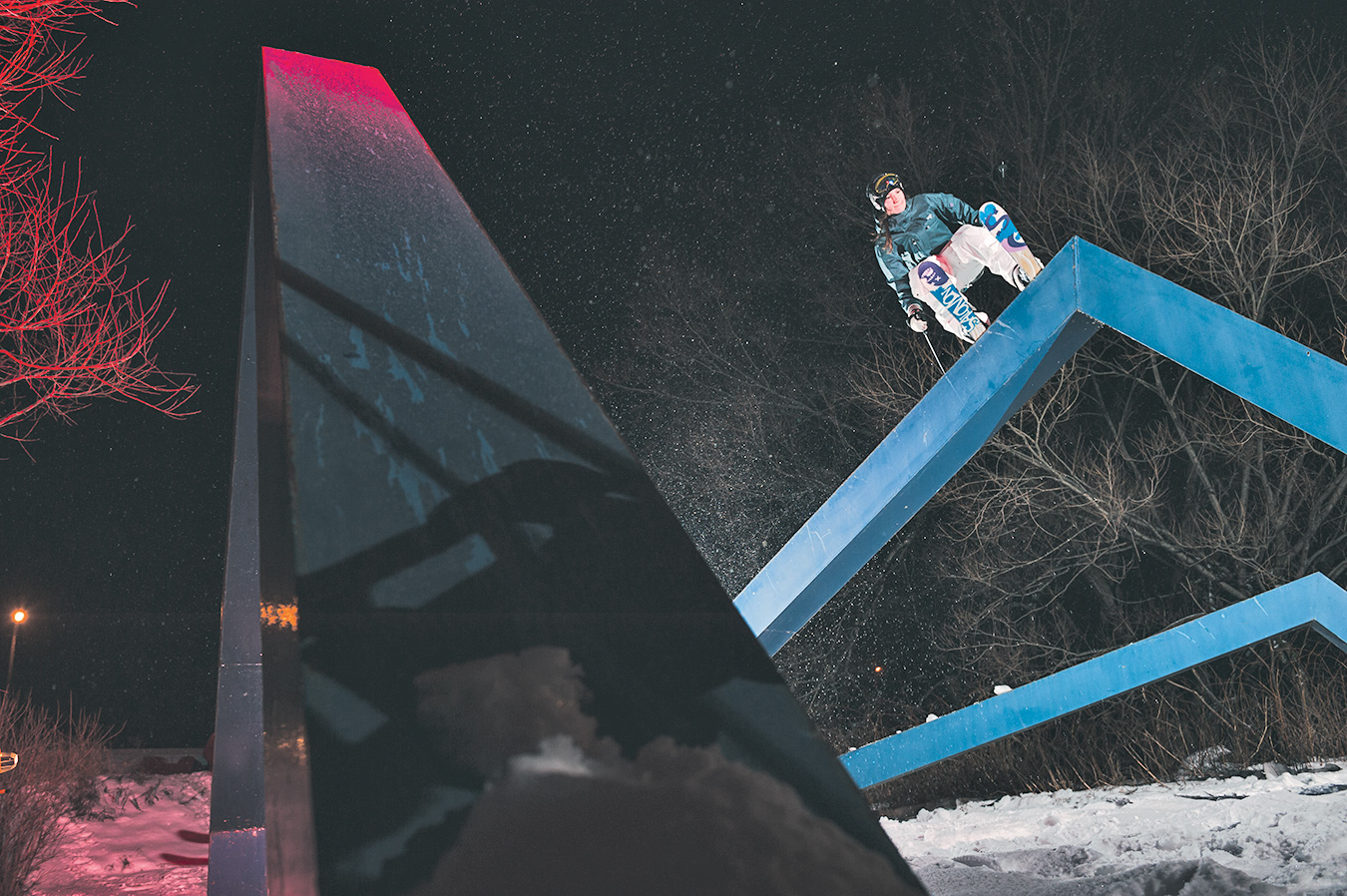
“Kaya Turski jibbing a sculpture in Longueuil near Montreal for Level 1 and the Orage team shoot in 2009. It was one of her first major urban video shoots, but I knew she could hold her own. The rest of the crew was impressed by how big, technical and stylish she could be.” Photo: Felix Rioux
Early Contests
As early park and pipe skiing seemed to be burgeoning, there simply weren’t many options for women. Organizers argued that there weren’t enough qualified women to fill a field, while skiers countered that there was nothing to attract young women to the sport.
When I first started competing in Tahoe for slopestyle competitions, they would always make me and [snowboarder and future X Games gold medalist] Jamie Anderson compete against each other because there were so few girls in our local area. So, it’d be snowboarder and skier competing against each other.—Michelle Parker
The first US Open I ever went to, I believe was in 1999 and I was the only girl there. The subsequent few years were really challenging. There were just enough of us now that we wanted to compete, but it was such an afterthought.
Vail and the US Open back in the day was notoriously freezing. One time, it was 10 degrees below zero all day long. And they said, “Girls, warm up starting at 7:30 a.m.. We’re going to run the girls first thing.” And then it was like, “No, actually change of plans. We’ve got to get these guys in.” I think we ran at 4:00 p.m.. The lifts were stopping and they were finally like, “OK, the girls get one run.”—Kristi Leskinen
I was 18 when I had my first knee injury. It was at the Orage European Open and we needed a weather day. It was super icy and then it was snowing during competition—flat light, you couldn’t get enough speed. They decided to push on and host the competition. I came up short on the jump and blew my knee.
That was the year before women were accepted into slopestyle for X Games. I wasn’t on the X Games roster because I got hurt the year before, but I was the first alternate. That was another competition that should have used a weather day. Sarah broke her back; Kristi almost didn’t compete. I was just waiting for someone to drop out, but you’re not going to drop out of the first-ever X Games.—Michelle Parker
It was very obvious that no girl could clear the X Games jump that year. I remember Jon Olsson speaking up and going, “You can’t send them. You can’t clear the jumps.” They put it to a vote. And, of course, you have a lot of young, ambitious people that were just like, “Yeah, we’re going to do it.” I think there were maybe eight girls and three of them had season-ending injuries during the contest—two or three blown knees and Sarah broke her back. We just had no business. I pulled out of the bottom jump all three times because there was no way I was not going to land 10 feet short.—Kristi Leskinen
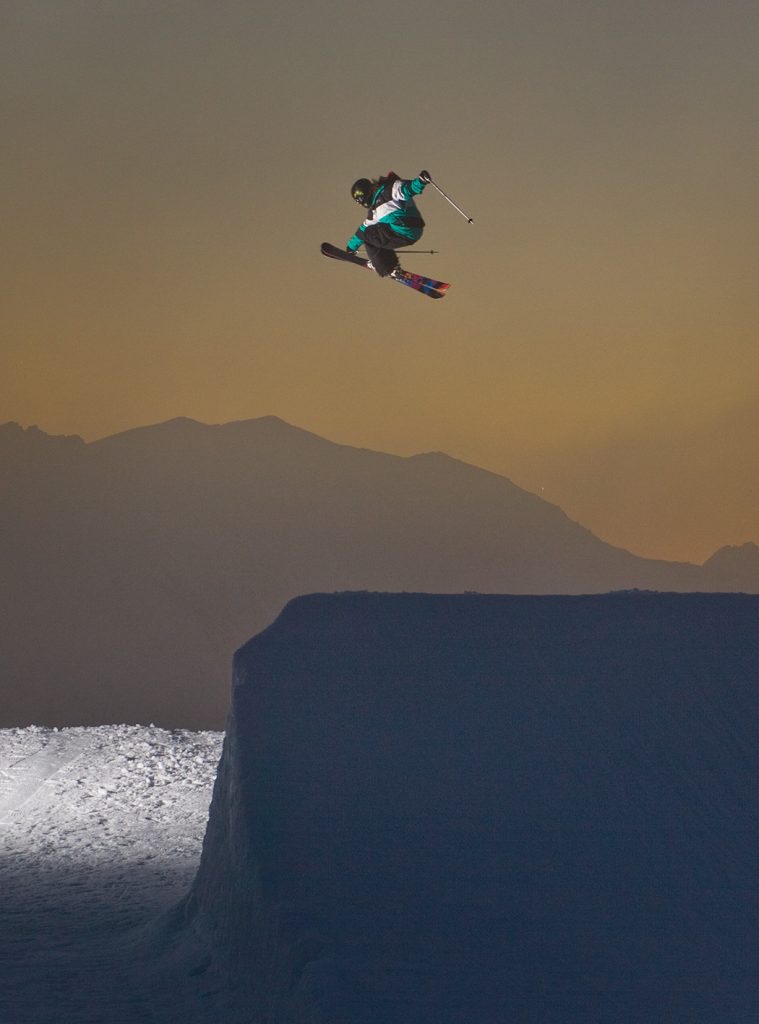
“Kim Lamarre in 2008 above Snow Park near Queenstown, New Zealand. God bless Snow Park—that was one of the most fun spots on the planet. Shooting sunset there was like shooting fish in a barrel, especially when you have the best 180 woman in the business, Kim Lamarre. No one could do a 180 as well as her.” Photo: Chris O’Connell
World Ski Invitational
In the mid-2000s, there was no bigger stage than the World Ski Invitational. The X Games had the hype and the TV coverage, but the WSI, which took place in Whistler, BC during the World Ski and Snowboard Festival, was the sport’s greatest live show. It was as much a music and arts festival as a ski contest. Thousands would pack Whistler Village to watch skiers perform under the lights, followed by concerts with acts such as Justin Timberlake, the Black-Eyed Peas, and Arrested Development. Michelle was at the contest as the first alternate.
There were three girls invited to the Big Air. I remember someone mentioning, “Oh, I don’t think Sarah is going to take her run. Maybe ask her.” And so I politely went out to her—she was an idol obviously—and I said, “Hey Sarah, someone mentioned you might not be competing today and I just wanted to double check to see because I’m the first alternate.” And she was like, “Oh I am, but I am totally happy to give you my spot if you want.”—Michelle Parker
Parker declined and instead cozied up to the fence to watch.
Sarah proceeded to go up and land the most beautiful cork 900. I have it so visually imprinted in my head—grabbed mute, stomped it, so clean, went huge. And again, just my initial reaction, watching your idol do that after she graciously offered you her spot in the competition, I busted through two fences just to run out into the bottom and tackle her with a hug.
Sarah saw our sport from a 1,000-foot view. She embodied what a true leader is with how gracious she was sharing the spotlight.
—Michelle Parker
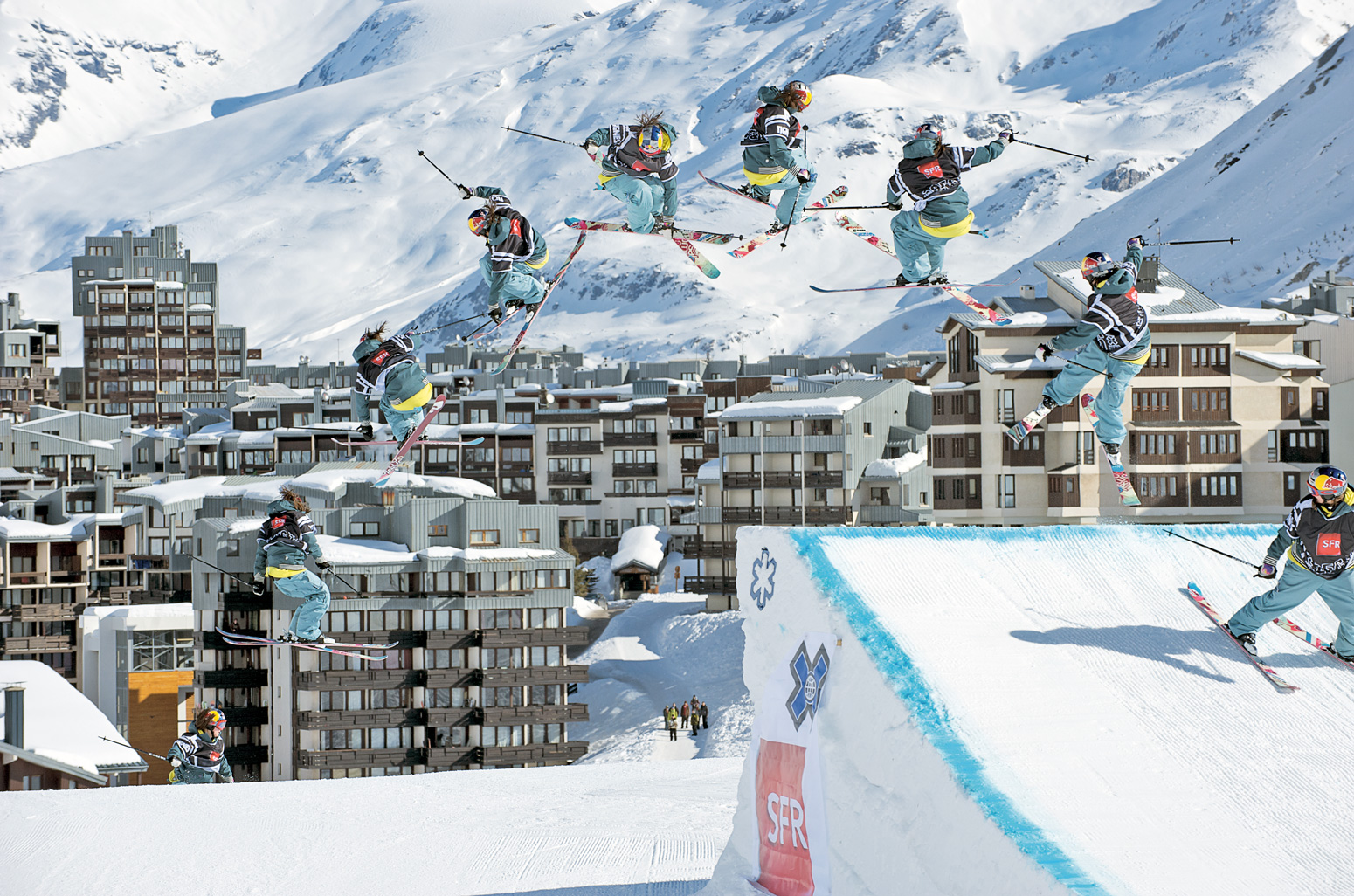
Kaya Turski locking in a switch 720 and a slopestyle gold in Tignes, France for the Euro X Games. Turski won the event four years in a row starting in 2010 and ending in 2013. Photo: Felix Rioux
The Cover Shots
A season or two after Michelle’s bathing suit photo shoot with Freeskier, the magazine sent a photographer to Squaw Valley, CA to shoot ski photos for their Women’s Annual.
There was this down-flat-down with a kinked little donkey rail at the bottom. I was like, “Yeah, I’ll go hit that.” I had never hit an urban rail and had never hit a kink rail, but I was just determined. I had pretty good rail skills at that time. The photographer was like, “Straight up, Michelle, if you stomp this, we’ll give you the cover of the magazine.” OK, that’s a lot of incentive. So I built my drop-in ramp out of a coffee table, a dog crate and then a piece of wood, and went to a school, shoveled all this snow into my truck and then drove out there to make the inrun. To this day, it would stand up as being pretty raw.
I ate it so many times, but greased the rail and got it on film and was like, “Hell yeah, my first cover. I’m so hyped.” And then I didn’t get the cover.—Michelle Parker
clockwise from top left (click to expand)
Michelle Parker and I have travelled a fair bit together. She can ski anything and, most importantly, she makes a good turn, which, in my humble opinion, separates a good skier from a not-as-good skier—even if you are pro.” 2006, Japan. Photo: Chris O’Connell
“The Nine Queens event in Serfaus-Fiss-Ladis, Austria brought the best women freeskiers together all in one place, matching them up with a select group of photographers and videographers from around the world for a week of creation. One afternoon we went off to shoot some lifestyle photos with the Austrian Alps in the background and somehow a trained falcon got involved. I honestly don’t remember why, but as you can see from Kaya Turski’s face, we had a little bit of fun.” Photo: Dan Carr
The celebrated—and Olympic decorated—halfpipe skier Roz Groenewoud in 2007 in Montreal. Photo: Chris O’Connell
The ladies of Nine Queens in 2011, wearing traditional Austrian dresses between all-female jib sessions at Serfaus-Fiss-Ladis, Austria. Pictured left to right: Caja Schöpf, Anna Segal, Eva Patscheider, Maria Bagge, Emma Dahlström, Lisa Zimmermann, Ashley Battersby, Kim Lamarre, Kaya Turski, and Keri Herman. Photo: Felix Rioux
The first women’s ski shot to appear on the cover of Freeskier’s Women’s Annual was in 2008—a big mountain shot of Lynsey Dyer hitting Fat Bastard, a cliff in the Jackson Hole, WY backcountry. By that time, the idea of putting skiers in bikinis in a ski magazine was no longer accepted like it had been just six years prior when Kristi and Sarah posed on the cover together.
It took a little while to realize that’s not what we were striving for. That’s not why we thought we deserved to be in the magazine. And so one year I can remember shooting for FHM and then going to Freeskier and saying, “No, I’m not going to get in a hot tub in my bathing suit. I’m going to stand here normally dressed because this is for a ski magazine and that’s for a men’s magazine and they’re different.” Fundamentally different.—Kristi Leskinen
clockwise from top left (click to expand)
“The first lifestyle shot Grete Eliassen and I took when her career was really skyrocketing—it was published all over the world. The photo became a running joke between her and I. For the next half-dozen years or so, when we would shoot lifestyle, she would jokingly do this pose.” Photo: Chris O’Connell
Selfies on the BlackBerry at Winter X Games. The devices have changed and so has the sport. Grete Eliassen, 2009. Photo: Chris O’Connell
Kristi Leskinen in fishnets in the early 2000s in Huntington Beach, CA. Kristi became one of the first female ski athletes to speak up and distinguish between modeling shoots and ski shoots after working with publications such as men’s lifestyle magazine FHM. Photo: Chris O’Connell
Sarah Burke, the undisputed queen of freeskiing, made her presence felt everywhere she clicked in. Here she’s smiling through another long summer day on the Palmer Glacier at Mt. Hood, OR. Photo: Chris O’Connell
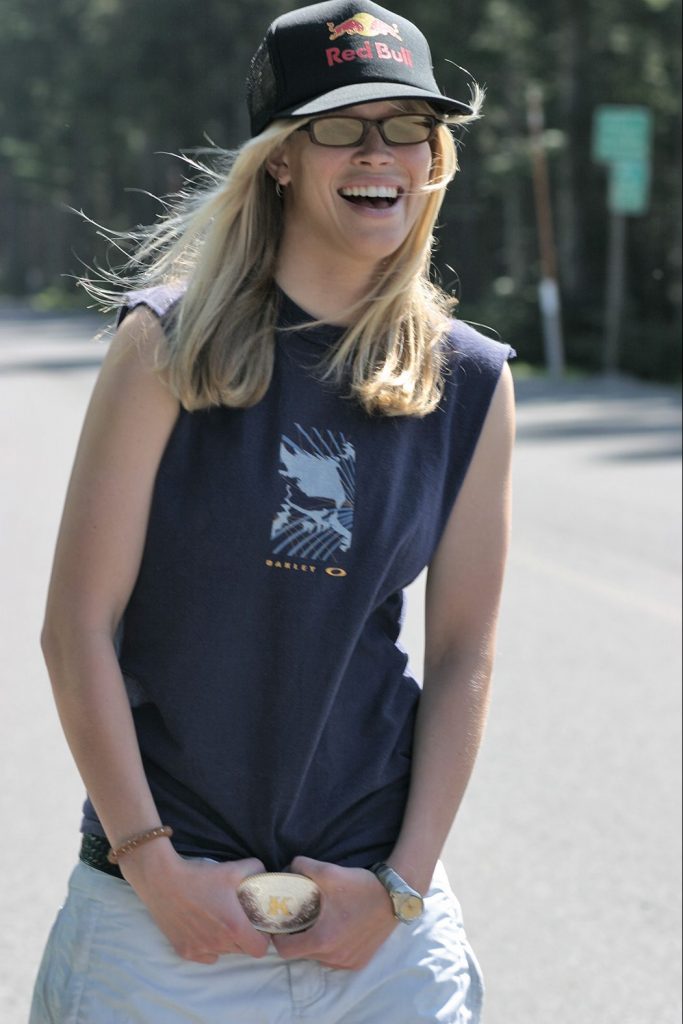
Kristi Leskinen embracing that 2000s turn-of-the-century style. Big belt buckles and baggy pants weren’t just a Tanner Hall and C. R. Johnson thing after all. Photo: Chris O’Connell
A Continued Evolution
Women’s freeskiing isn’t in the same place as it was in the early 2000s. By 2007, Powder’s “Powder Girl” section grew from a column featuring cute portraits to a 40-page insert distinctly targeted toward female skiers. Skiing Magazine released a special insert dedicated to women that year as well. About that same time, this title launched, and has included female content and profiles as part of the same platform as men since day one. Even Freeskier’s Women’s Annual evolved, the Dyer cover kicking off a shift from aesthetics toward athleticism. The landscape had changed, and the sport had to change with it.
Leskinen, still a vocal proponent for women’s sports, insists that while freeskiing continues to make advances on the hill, far more progress needs to be made off of it.
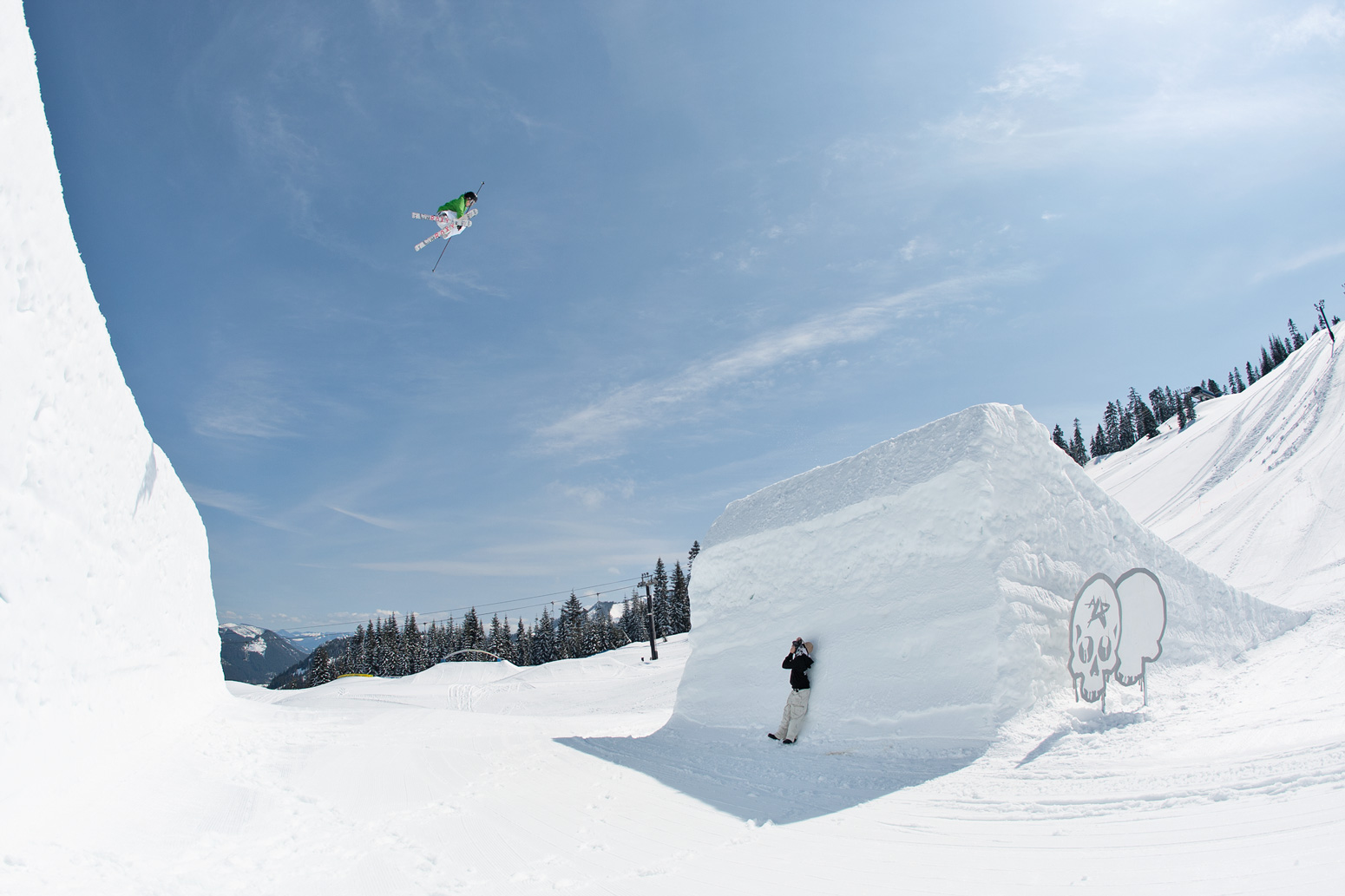
“The last dedicated shoot I did with Sarah Burke before she passed. We had to sit the weather out for a bit on Snoqualmie Pass, WA, but she made it worth the wait. Sarah just did it better.” Photo: Chris O’Connell
“The prize money, we’ve solved,” she says. “Sponsorships still aren’t even anywhere close. A few years ago, I looked up all of the hard goods sponsors and wrote down every name that’s listed on their websites. And I want to say 16 percent of the names were female. If 40 percent of ski sales go to women, we’re not even close to that when it comes to sponsorships.”
Leskinen believes tweaks could be made to contest formats as well, to help encourage more progression while also considering a female’s greater biological likelihood of suffering injury, particularly ACL tears. “The judging format is often designed based on what [event organizers] decide is best for men’s events,” she says.
Yet something that hasn’t lagged behind—perhaps the aspect that was most influenced by Leskinen and Parker’s generation—is the actual skiing.
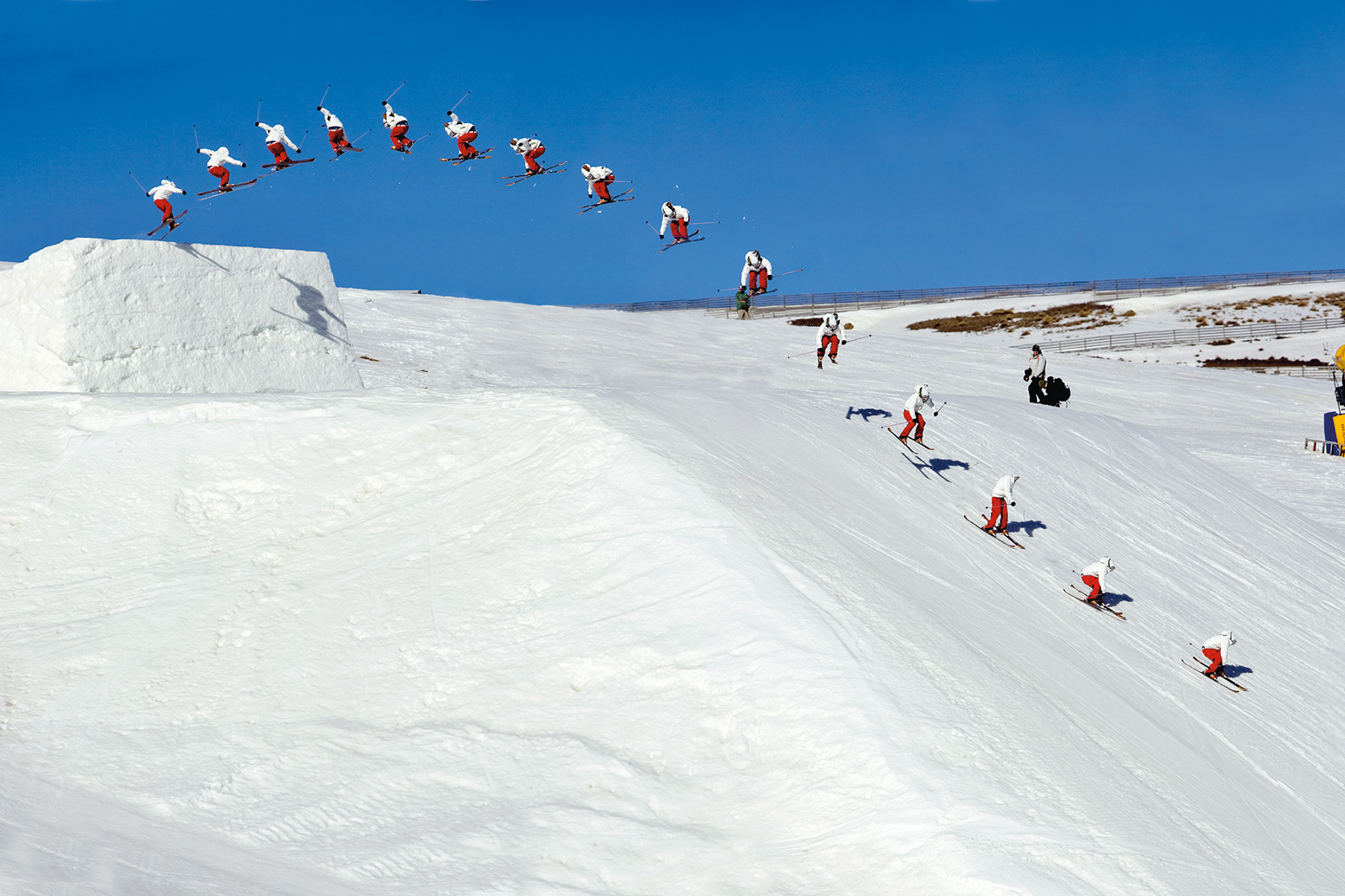
Michelle Parker, Snow Park, New Zealand, big 360 sometime in the late 2000s. Nowadays people don’t remember Michelle’s park skiing, but she had proper style and little fear on the big features. Photo: Chris O’Connell
“One of the things that’s overlooked is [that today’s women are] spinning both directions,” Leskinen points out. “The first X Games, Sarah broke her back, landing short doing a left 1080. Kelly Sildaru does them forward and switch—both directions.”
Sildaru and company now showcase their talents on the world’s biggest stage. Slopestyle and halfpipe skiers are no longer niche “new school skiers,” they are Olympic athletes and international celebrities—a testament to the women who fought, less than two decades ago, just to get on course.
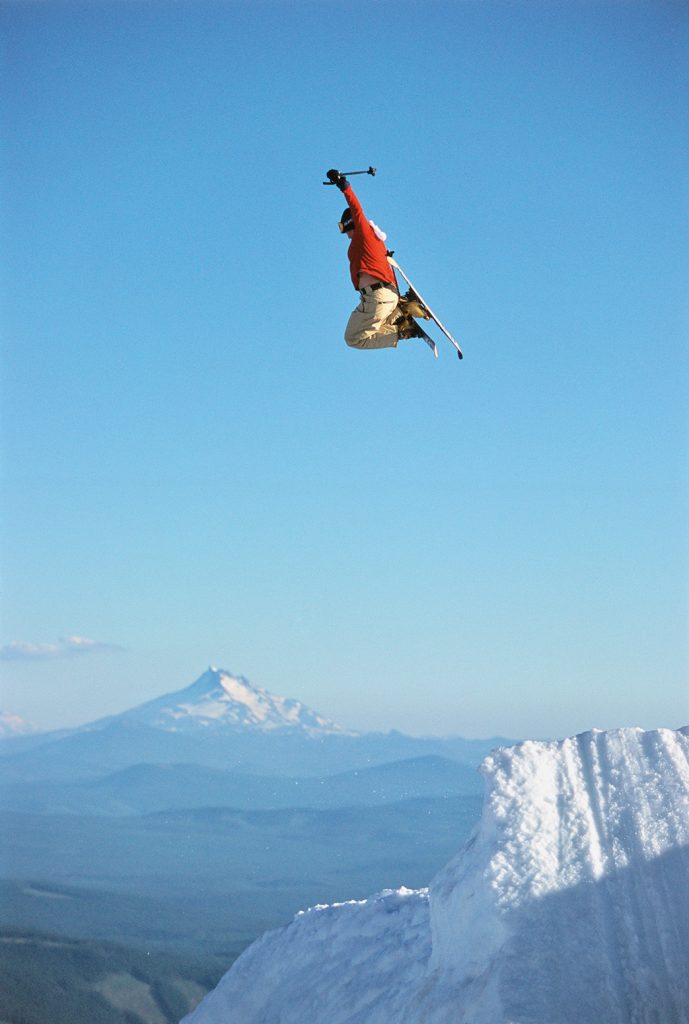
“It was 1999, the second summer we shot with Sarah up at Mt. Hood, OR, and it was pretty clear she was going to be something big. Even that first Mt. Hood summer when she was 15 in 1998, we could tell she was different.” Photo: Chris O’Connell
This article first appeared in The Ski Journal Issue 14.4
